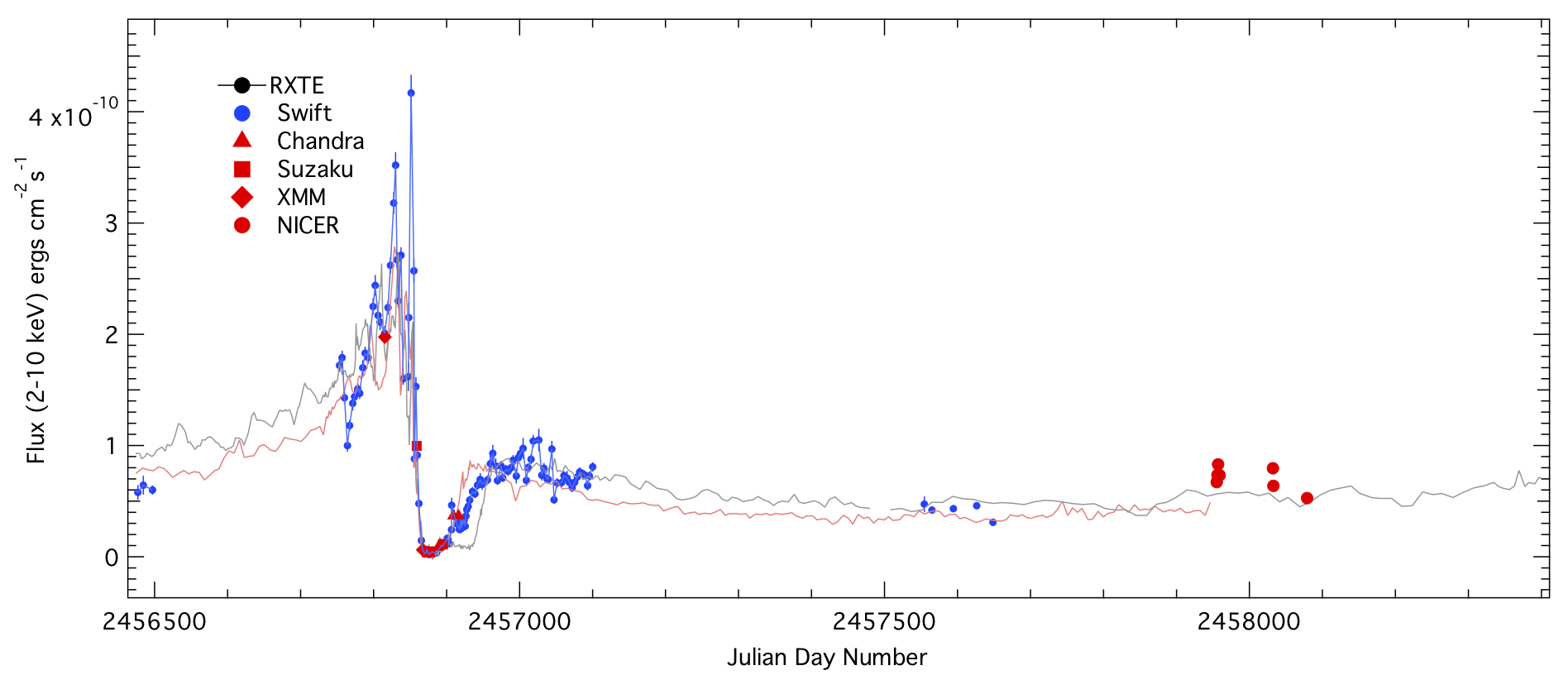NICER / ISS Science Nugget for December 28, 2017Massive star studied by NICER topic for a question on JeopardyA current NICER target was recently the subject of an answer on the game show "Jeopardy." On the December 6 episode, under the category "Greek Letter Phrases," the $1,000 answer was "NASA intently studies the changing luminosity of this most massive star system within 10,000 light-years of earth". The correct answer was "What is Eta Carinae?". Eta Carinae is a contender for the most massive and luminous star system known, and (as noted by the writers of Jeopardy) the most massive star within 10,000 lightyears of earth. It's also notoriously unstable, having experienced a powerful eruption in the 1840's, when it became the second brightest star in the night sky. Monitoring observations of the X-ray emission from Eta Carinae starting in the 1990's using available NASA X-ray observatories helped establish that the star is in fact a binary system with a lower-mass companion star that orbits the more massive star in a 5.5-year, highly elliptical orbit. The X-ray emission helps diagnose the material still being blown off of both stars, and helps us better understand the eventual fate of this star system. The amount of mass being lost from Eta Carinae varies with the orbit but also seems to vary from one orbital cycle to the next, for reasons we still don't understand. Now NICER has become the latest X-ray telescope to monitor the X-ray emission from Eta Carinae. NICER's flexible pointing capability and its sensitivity to the 2–10 keV X-ray band (where Eta Carinae emits most of its stellar X-ray emission) make NICER perhaps the best X-ray telescope yet to keep an eye on the high-energy emission from Eta Carinae.
It will be extremely interesting to carry out intensive NICER observations of the system as the two stars approach minimum separation, since this is a time when the X-ray emission changes wildly, almost disappearing for a period of 3 months. If you'd like to match wits with the Jeopardy contestants on Eta Carinae (or other topics), the video of this Jeopardy episode is available here. The Eta Carinae question is at the 8 minute 30 second mark. NICER
|



